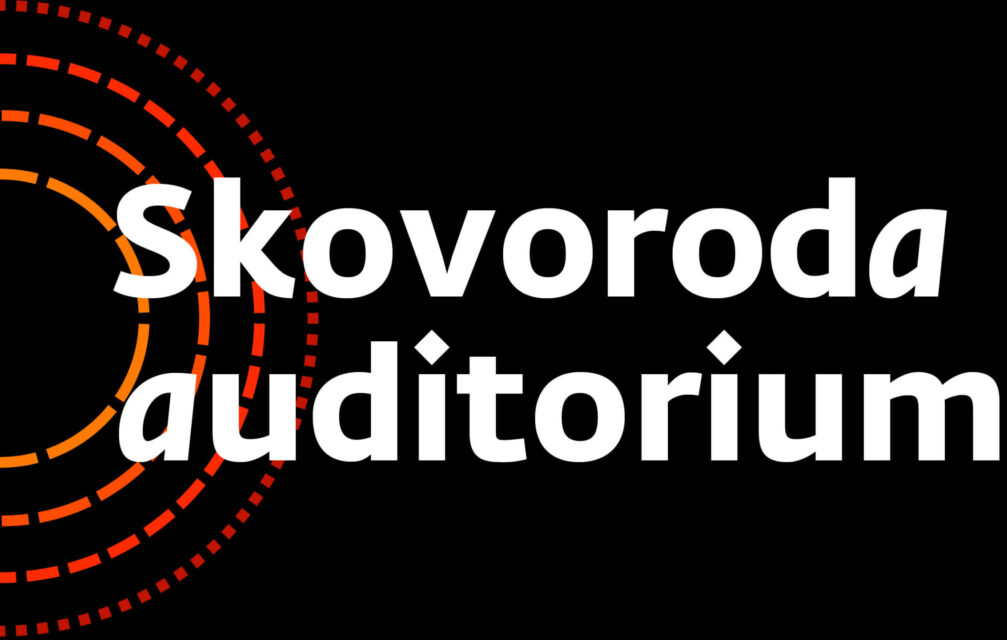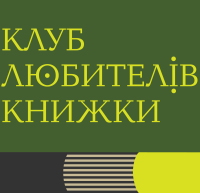Article by Oleksiy Sokyrko, PhD,
Taras Shevchenko National University of Kyiv
From a historical point of view, the lands stretching from Kharkiv to Sumy in the north, and from the Upper Dnipro to Odesa in the south-west seem to have incorporated all the features of ‘Ukraine-ness’, its political consciousness, when the region was formed as a distinct separate ethnic and national entity. Therefore, even the results of the pre-Maidan regional elections held in 2012, where Ukrainian people supported the democratic and pro-Western oriented parties, is not an accident or a random, chaotic protest against the then pro-Russian government [original of this article in Ukrainian was published in 2013, while Yanukovych’s government was still in power. – Ed.]. Instead, it is a logical aftermath of the local mindset and values, that have been historically shaped in the region.
Ukraine and its ‘slobodas’
Up until the mid-19th century, the north-eastern regions of Ukraine, also known as Slobidska Ukraine or Slobozhanshchyna, as well as Cossack Hetman State formed a uniform ethnocultural entity. In the 16th and 17th centuries those territories, once owned by the ‘Wild Fields’, a historic term used to describe southern and eastern Ukraine, were colonised by the Ukrainian Cossacks and Russian settlers, with a noticeable predominance of the former. Until the 20th century ethnic and historic borders of Slobozanshchyna, encircled an undeniably larger territory than the modern ones, and they also included lands of the modern Russian provinces of Kursk and Belgorod. Ukrainians constituted from 32 to 50% of the local population in these provinces.
Cossack slobodas have adopted administrative traditions of the Ukrainian steppe knights. Regiments (polks) and the territorial military subdivisions (sotnias) that have existed on the territories of Slobozhanshchyna until the mid-18th century and were in fact copied from the Hetman State. Even after Slobozanshchyna’s autonomy was revoked, its ethnocultural identity continued to strive. By the late 18th century proportion of the Ukrainian population on these territories reached 85.9%, while its former Cossack elite held key position in the local bureaucratic system. These former Cossack authorities supported the development of Ukrainian educational institutions, such as Kharkiv University (1805). This university has come become the first (and for a short while remained the only one) intellectual centre of the Ukrainian national renaissance movement.
Read more: “The epitome of Russia’s existence is baffling” – historian
The effects of the imperial economic and Russification policy were revealed relatively late. This happened in the late 19th century, during the industrial revolution and labour migrations. From now on empire’s key support centres were former Russified Cossack cities, which were expanded using Russian merchants and entrepreneurs’ money. Thus, Slobozhanshchyna was seen through the lenses of these cities and as a result an entire region was believed to be fully Russified. This was not the case though. Another outcome of the social transformations of the late 19th and early 20th century happened to be the decline of the Ukrainian population living in Kursk and Belgorod regions. These people were encouraged to travel and settle in the eastern regions of the Russian empire.
Effects of the Soviet policies in Ukraine turned out to be much harsher. Holodomor in 1932-1933, as well as Stalin’s industrialisation plans have ultimately weakened Ukrainian provinces and cemented Russian presence in administrative and industrial centres. Stalin’s repressions and human losses in the Second World War created a population gap and were compensated by repopulation efforts (Soviet authorities encouraged settlers, majority of whom were Russians) and re-industrialisation. This has eventually shaped region’s modern outlook. According to the national census held in 1989, Ukrainians constituted 62,8% in Kharkiv region, and 85,5% in Sumy region. The above-mentioned perturbations have potentially brought some positive changes too – Slobozhanshchyna, unlike Ukraine’s south-east, has always kept its connections between the big cities, towns and villages, creating a relatively unified ethnocultural entity. Its regional identity was rather unique too – people of Slobozhanshchyna have not only taken pride in building Soviet tanks and Kremlin’s ruby stars, but also in being the heirs of Ukrainian Cossacks. Complexity of the historic and national consciousness on these territories has shown that very much like Kyiv or Volyn, Slobozhanshchyna only needs a small push to emerge out of a prolonged Soviet lethargy.
Naddnipryanshchyna, or the Dnipro Ukraine: from Sich to Makhno
Supporters of the so called ‘Russian world’ are traditionally allocating Dnipropetrovsk, Zaporizhya and Kirovohrad regions into ‘their own’, ‘proper’ Russian domain. They seem to forget that these territories once were the heart of the Zaporizhian Sich and were only incorporated into the Russian Empire in the late 17th century. By that time Ukrainian steppes were populated by Ukrainians and their proportion among the people of the empire continued to grow. According to the census of 1763-1764 Ukrainians constituted 74.8% of the population, Russians – 12.05%, while Vlachs (Romanians, Moldavians and partially Ukrainians) were 9.1%, and Serbs constituted 2.08%. Naddnipryanshchyna held an important position on the trade routes around Dnipro River. It was also an important agricultural, as well as industrial centre of the late 19th century.
Russian imperial policy, as much as the Soviet one several decades later, has singled out several of its priorities in the region. For decades countless cities of Naddnipryanshchyna have served as empire’s administrative and military centres, and as such were populated by the Russian officers and Russian imperial officials. By the late 19th century there was a push towards mechanical engineering and manufacturing, initiated by the private investors and supported by the Tsar’s government. The Russian government was interested in defence manufacturing, which had little demand on a domestic market. Joint interests of investors and the imperial government led to the establishment of a distinctive Zaporizhian-Kryvyy Rig industrial enclave. It was more connected to a neighbouring Donetsk industrial region and less to the local socio-economic base. Therefore, both Tsar and Soviet government took special care in ‘refilling’ labour vacuum in the Russified Ukrainian cities. This has eventually balanced out ethnic statistics in favour of a Russian metropole. According to the 1926 census, proportion of Ukrainians living in the region fell to 66%, while Russians grew up to 14,3%. Other nations also settled in the region as a result of the government settlement programme, for example Jews (6.1%), Germans (3.7%), Romanians and others (8.3%).
Read more: «False narratives on Ukraine can be fatal for European security» – historian
Naddnipryanshchyna was one of the most resistant regions, holding out against both imperial and the Soviet domination. In 1918-1923 this resulted in the emergence of the self-governed village republics. Even though those republics carried a deep-rooted feeling of individualism and freedom-loving nature of the Ukrainian farmers and countrymen, they fell victims to a lack of national ideology, civil society, civic values, and short-sighted political goals. Soviet empire has punished the heirs of Huliaipole, the birthplace of the Ukrainian anarchist Nestor Makhno, extorting their wealth through the so-called Soviet collectivisation, and murdering them in massive Soviet-organised genocide, Holodomor. Ethnic changes that followed the Second World War, like for instance horrific Nazi-organised mass killing of the Jewish people, or resettling of ethnic Germans, led to their replacement by the Russian settlers. Soviet Russification policies of 1970-1980s caused yet another increase of the Russian-speakers in the cities. This time this was achieved at the cost of ethnic Ukrainians, who were forced to switch to Russian.
Unlike the north-east, Ukrainians of Naddnipryanshchyna were not a majority in the cities. This explains the fact that the region did not have major Ukrainian educational or cultural centres – those started to appear only in the late 19th century. Russian, and later Soviet educational institutions dominated minor islands of the Ukrainian identity. These institutions were not universities in its traditional understanding, and were only designed to provide technical education to serve the needs of the Soviet state. Nevertheless, ethnocultural and national self-identification of the local population wasn’t monolithically Russian or Ukrainian, forming a rather syncretic identity and merging freedom-loving Cossacks, Makhnovism, and proud steel workers and miners.
Non-Russian ‘Novorosiya’
Lands of the modern-day Odesa, Kherson and Mykolayiv provinces, according to the advocates of the ‘Russian world’, are inseparable part of this ‘Russian domain’, perhaps as important for the imperial ideology as Crimea and Donbas. How valid is this statement? Modern demographic and social outlook of the Ukrainian South is an outcome of its annexation by the Russian Empire, a long process that has lasted from the mid-18th century until the early 19th century. Its fertile lands and convenient proximity to the Black Sea accelerated colonisation of the territories seized from the Tatars. Russian imperial authorities were also quick at “resetting” the cities and replacing the Ottomans as the new rulers. By 1782 Ukrainian settlers, Cossacks of the Hetman State, and farmer escapees from the Right Bank of the Dnipro River constituted nearly 71.5% of the local population. In Kherson region for example, there was nearly 90% of ethnic Ukrainians – more than in ethnically Ukrainian Slobozhanshchyna.
Cotton, wheat, forestry, and meat exports gradually transformed the majority of the cities of the region, such as Odesa, Mykolayiv and Kherson, from fortresses into trade harbours and international trade centres. The spirit of entrepreneurship, freedom, lack of slavery and lenient border control formed a specific type of mindset, which was very different from paternalistic and communal mentality of the ‘Russian world’. Local way of thinking felt familiar not only for Ukrainians, but also for the foreign settlers protected by the Russian metropole – Bulgarians, Greeks, Germans, who constituted no less than 15% of the local population. Therefore, as a result, the region has been one of the most cosmopolitan, non-Russian regions of the empire.
The status of the ‘heartland’ of the ‘Russian world’ was given to the south Ukraine after the Russian revolution in 1917, when it became a refuge for various monarchist and pan-Russian movements eager to restore ‘the Great Russia’. Nevertheless, small cities and villages continued their non-Russian lifestyles, unwilling to surrender neither to bolsheviks nor the white Russians. This resistance was perfectly described by Mykola Kulish, Ukrainian prose writer born in Kherson region. Artificial famine, collectivisation and two rounds of industrialisation became Soviets’ universal tool of submission and coercion. Post-war censuses demonstrated a decline of Ukrainian population in Odesa (55,4%), Mykolayiv (88,1%) and Kherson (81%) regions in 1959, and 55%, 78,8%, 78,3% respectively in 1970, as well as to 54,6%, 75,6% and 75,8% in 1989.
Overview of this geographical axis that has united different periods of Ukrainian history brings us to an obvious conclusion. Everything that seems crystal-clear and straightforward today, for instance an existence of the Russian-speakers, their preference of the Soviet values and their flirt with the ‘Russian world’ is nothing else, but a hazy mirage. This illusion has little to do with the Ukraine’s historically created core. Revival of the Ukrainian South East is not the matter of the history, but the present time.




